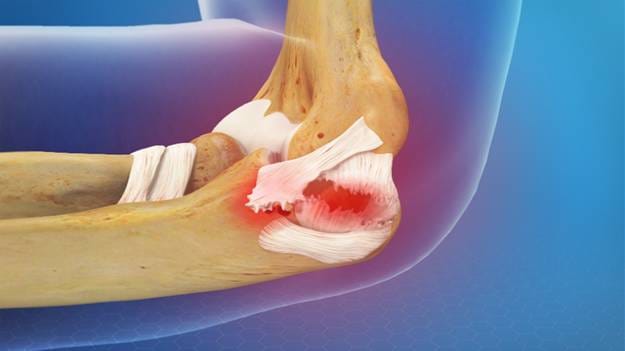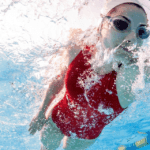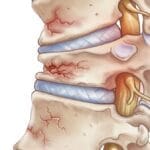Ligament injuries in the arm are relatively common, especially among athletes and individuals involved in physical labor. These injuries can range from mild sprains to severe tears and ruptures, and they occur when the ligaments that connect bones and stabilize joints are overstretched or torn. This article provides an in-depth guide to recognizing arm ligament injuries, understanding the available treatment options, and answering common questions.
Recognizing Arm Ligament Injuries
Ligament injuries in the arm typically occur in the elbow, shoulder, and wrist. Here’s how you can recognize such injuries:
- Pain: One of the first signs of a ligament injury is pain in the affected joint, which may worsen with movement or weight-bearing activities. The pain can be sharp and sudden at the moment of injury or may gradually worsen over time.
- Swelling and Bruising: Swelling around the injured joint is common, and you might notice bruising, especially if there has been a significant tear.
- Limited Mobility: Difficulty moving the arm, wrist, or shoulder without pain is a typical indicator of ligament damage. For example, in a wrist sprain, gripping or rotating motions may become painful.
- Popping Sensation: In severe cases, you might hear or feel a “pop” at the time of injury, which is often a sign of a ligament tear or rupture.
- Instability: Ligament injuries often lead to joint instability. For instance, if the ligaments in the shoulder are damaged, the joint may feel loose or prone to dislocation during movements.
Types of Arm Ligament Injuries
- Elbow Ligament Injuries: Common in sports like baseball, these injuries often involve the ulnar collateral ligament (UCL). Symptoms include pain on the inside of the elbow, reduced throwing ability, and swelling.
- Wrist Ligament Injuries: These occur when the wrist is overextended or twisted, as in falls where you land on an outstretched hand. The most affected ligaments are those stabilizing the wrist bones.
- Shoulder Ligament Injuries: The shoulder is prone to dislocations and sprains due to its wide range of motion. The ligaments around the shoulder joint, including those in the rotator cuff, can be stretched or torn, leading to significant pain and reduced mobility.
Causes of Ligament Injuries
Ligament injuries in the arm are often caused by:
- Trauma: A fall, collision, or sudden impact can overstretch or tear ligaments.
- Overuse: Repetitive movements, particularly in sports or manual labor, can lead to gradual ligament damage.
- Sudden Twisting or Stretching: Quick directional changes, awkward landings, or forceful twists can result in sprains or tears.
Immediate Treatment: The R.I.C.E. Method
The R.I.C.E. protocol is the most recommended first-aid treatment for ligament injuries, especially sprains:
- Rest: Stop using the affected arm and avoid activities that cause pain or discomfort.
- Ice: Apply ice to the injured area to reduce swelling and inflammation. Ice the area for 15-20 minutes every two to three hours.
- Compression: Use an elastic bandage or compression sleeve to wrap the area. This helps minimize swelling and provides support to the joint.
- Elevation: Keep the injured arm elevated above the level of your heart to reduce swelling.
Advanced Treatment Options
For more severe injuries, or when home treatments don’t provide relief, the following options may be considered:
- Physical Therapy: Once the initial pain and swelling have subsided, a physical therapist can help restore strength and mobility to the injured arm. Exercises targeting the affected joint can help improve stability and prevent future injuries.
- Bracing and Immobilization: In some cases, the joint may need to be immobilized using a brace or splint to promote healing. This is particularly helpful for mild to moderate ligament tears.
- Medications: Over-the-counter pain relievers like ibuprofen can help manage pain and inflammation. For more severe pain, your doctor may prescribe stronger medications.
- Surgery: If the ligament is fully torn or ruptured, surgical intervention may be necessary. During surgery, the torn ligament is repaired or reconstructed, often using a tendon from another part of the body or a donor.
Rehabilitation and Recovery
Recovery from a ligament injury varies depending on the severity of the injury. Minor sprains can heal within a few weeks, while more serious tears may take months to fully recover. Physical therapy is a key component of rehabilitation, helping you regain full function of the arm. After surgery, rehabilitation may take several months, and it’s crucial to follow your physical therapist’s instructions to avoid re-injury.
Frequently Asked Questions (FAQs)
How do I know if I have a torn ligament in my arm?
You might have a torn ligament if you experience significant pain, swelling, and joint instability, along with reduced mobility. If you hear or feel a pop at the time of injury, it could be a sign of a severe tear. You should consult a doctor for imaging tests, like an MRI, to confirm the diagnosis.
How long does it take for a ligament injury in the arm to heal?
The recovery time for ligament injuries depends on the severity of the injury. Minor sprains may take 2-6 weeks, while severe tears could require 3-6 months of rehabilitation, particularly if surgery is needed.
Can ligament injuries heal without surgery?
Yes, many mild to moderate ligament injuries can heal with conservative treatments like rest, ice, physical therapy, and bracing. However, complete tears or ruptures may require surgery for full recovery.
What exercises can help with ligament recovery?
Your physical therapist will guide you through exercises designed to restore strength, flexibility, and stability to the affected joint. These may include range-of-motion exercises, resistance training, and gentle stretches.
Can ligament injuries lead to long-term complications?
If not properly treated, ligament injuries can lead to chronic pain, joint instability, and an increased risk of future injuries. Seeking early treatment and following through with rehabilitation is essential for a full recovery.
Conclusion
Recognizing and treating arm ligament injuries promptly can prevent long-term complications and ensure a faster recovery. Whether the injury is due to a traumatic event or repetitive strain, using proper treatment methods like the R.I.C.E. protocol, physical therapy, and, in severe cases, surgery can help restore full function to your arm. Consulting with a healthcare professional is vital to ensure the appropriate care for your injury and to avoid further damage





